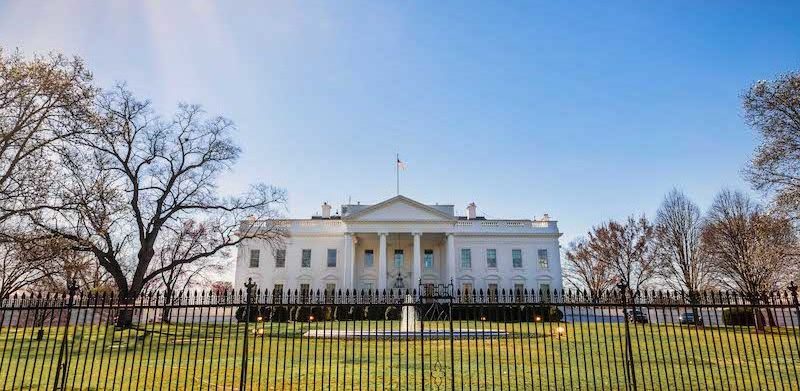
Over the last two years, OIRA has made many positive contributions to the administrative state.
From 1981 through 2017, staffing numbers at the Office of Information and Regulatory Affairs (OIRA) declined steadily. That trend was reversed in 2018. OIRA’s need for additional staff reflected the diverse projects it has undertaken over the last two years. These projects have involved improving the accuracy of the Unified Agenda, working with the Administrative Conference of the United States (ACUS) to improve the efficacy and efficiency of the Paperwork Reduction Act (PRA), and implementing the first regulatory budget, a regulatory reform idea that had been pioneered by the Office of Management and Budget (OMB) in 1979.
The examples that follow capture some of OIRA’s often overlooked contributions to the administrative state over the last two years.
Regulatory Budget: Implementation. Executive Order 13,771 contains President Donald J. Trump’s one-in, two-out regulatory directive and requires “that the cost of planned regulations be prudently managed and controlled through a budgeting process.” Three days after the order was signed, OIRA’s career leadership initiated its implementation by sending a detailed, Q&A-style interim guidance memorandum to regulatory policy officers across the government. The document explained the order’s requirements and provided detailed compliance information on diverse issues, including how to determine what regulatory documents are covered and what accounting methodology should be used in compliance calculations. Two months later, the career staff had assessed the public comments OIRA received and developed a refined—and no longer interim—memorandum on how to implement the President’s regulatory cost control mandate.
Regulatory Budget: Enforcement. OIRA’s career staff did more than set up the first regulatory budget—they also took the lead in enforcing it, along with the Trump Administration’s broader regulatory reform agenda. Less than a month after it issued its memorandum implementing the regulatory budget, OIRA sent its guidance on regulatory reform accountability to agencies. The document provided instructions to agencies on how to implement President Trump’s Executive Order 13,777, “Enforcing the Regulatory Reform Agenda.” To minimize the burden on agencies, OIRA integrated the order’s requirements into existing agency performance planning and reporting duties under the Government Performance and Results Act and OMB Circular A-11.
Regulatory Budget: Integration with the PRA. OIRA Administrator Neomi Rao leveraged the Office’s PRA authorities to help manage the new regulatory budgeting process. She did so by repurposing OIRA’s existing Information Collection Budget and Data Call system. The Administrator’s memorandum directs agencies “to identify where paperwork burden reduction initiatives would serve as an existing regulatory action the agency plans to eliminate” under Executive Order 13,771. The Information Collection Budget, which predates the PRA, was established by President Jimmy Carter in Executive Order 12,174 and is an important example of the administrative control innovations that were developed under his stewardship.
Regulatory Budget: Setting Regulatory Cost Allowances. Although the one-in, two-out provisions of Executive Order 13,771 have received considerable attention, the core of OIRA’s regulatory budget authority resides in a different provision of the order. This provision directs OMB to “identify to agencies a total amount of incremental costs that will be allowed for each agency in issuing new regulations and repealing regulations for the next fiscal year.” The Administrator’s September 2017 memorandum asking agencies to submit their proposed total incremental regulatory cost allowances for the next fiscal year marked the routinization of regulatory budgeting. OIRA’s publication of each agency’s regulatory cost caps is another aspect of the budget becoming an established administrative process.
Unified Agenda: Improving Regulatory Transparency. Congress is among the stakeholders that have expressed concerns about the accuracy of the Unified Agenda. In 2015, ACUS recommended that OIRA and the Regulatory Information Service Center take steps to improve the accuracy and transparency of the Unified Agenda. In 2017, consistent with ACUS’s recommendation, OIRA’s data call for the fall of 2017’s Regulatory Plan and Unified Agenda provided agencies with detailed instructions on how to prepare both submissions. The data call directed agencies take certain steps, which included classifying planned regulatory actions in accordance with Executive Order 13,771’s requirements and removing inactive regulatory actions from the Agenda.
International Agreements on Good Regulatory Practices. Rao signed memoranda of understanding with Israeli and Brazilian regulatory authorities. These agreements focus on the signatories’ commitment to improving national economic performance by reducing regulatory costs and bureaucracy. The October 2017 memorandum between OMB and the Israeli Ministry of Finance established a joint task force on good regulatory practices held under the auspices of the U.S. Department of the Treasury and U.S. Department of State. The August 2018 memorandum that OIRA and the International Trade Administration signed with Brazil’s Casa Civil and its Foreign Trade Council promotes information exchanges on good regulatory practices through roundtables and other “cooperative activities.”
White House Review of Internal Revenue Service Regulations. Rao signed an agreement with the Treasury Department that established OIRA’s review of Internal Revenue Service regulations. Scholarly analyses soon followed.
Ensuring the Continuity and Stability of U.S.–Canada Regulatory Cooperation. Rao, OMB Director Mick Mulvaney, and their Canadian counterparts, the President and the Secretary of the Treasury Board of Canada, signed a memorandum that continues the U.S.–Canada Regulatory Cooperation Council’s extensive regulatory coordination and harmonization activities.
Implementing Government-Wide Privacy Policies and Practices. Within OIRA, the Privacy branch is tasked with developing and implementing privacy and information security policies and practices across the federal government. In addition to its domestic responsibilities, OIRA, in conjunction with the Federal Privacy Council, works cooperatively with the data protection authorities from over a dozen countries.
Building the Infrastructure for Evidence-Based Policymaking. OIRA’s responsibilities include managing federal data quality. Its Statistical Program & Standards branch is responsible for “establishing standards and guidance for data collection and dissemination,” “assessing agency compliance with those standards,” and “coordinating” government-wide and “international statistical activities.” OIRA’s work to ensure the accuracy, objectivity, and utility of data used by the government is essential for assessing program effectiveness. OIRA explained to Congress that “agencies need a strong evidence infrastructure, including hiring and deploying trained staff; ensuring independence and rigor in statistics and evaluations; using cost-effective, cutting-edge methods; and bringing evidence to bear in policy and program decisions.”
During the last two years, OIRA has undertaken a variety of important ventures and coordinated with several agencies—domestic and international—to improve not only regulation but also the administrative state as a whole. These actions show promise and demonstrate the renewed vigor of OIRA under the current Administration.




